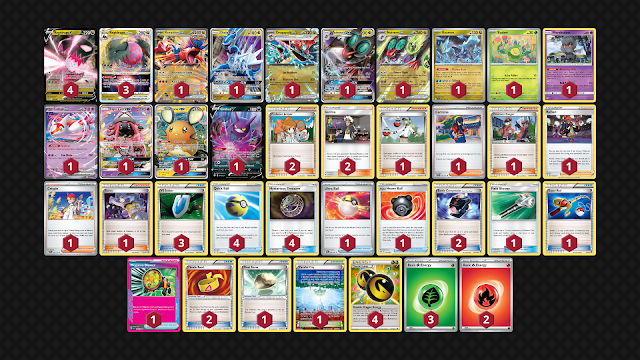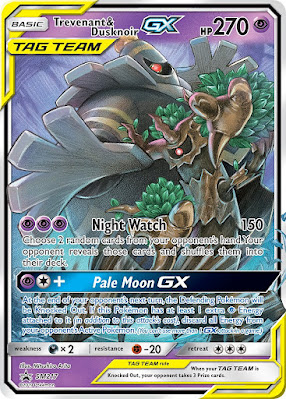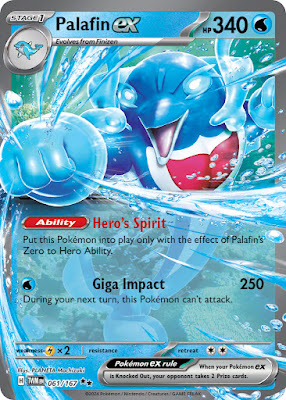From the beginning, I could see the castle's daunting silhouette looming on the horizon, but I didn't know yet how hard it would be to uncover all its secrets. Or how much I'd enjoy the quest.
I started at the front gate. Progression was easy at first, and I soon made my way to the courtyard. I learned how to navigate through its pathways, but soon found myself head to head with some kind of plant monstruosity -- the first boss battle of the game. Besting it was not easy, but it allowed me to progress further on to the servants' quarters, then to the factory. At some point, progress become impossible, but by then, I'd learned how to advance through the vines scattered throughout the deserted castle. I backtracked to the front gate and found a path upwards, that led me to the battlements. There were more obstacles and more enemies, and more powers for me to gain. By the end of my journey, I'd fallen into traps and climbed my way back, found countless secrets hidden in the castle's walls, and even travelled through a portal to a strange, dreamlike realm where reality seemed more malleable. All in my quest for the secret of Sudoku.
Oh, yeah, I forgot. All this happened in a giant sudoku. This is a sudoku game.
Sorry, I guess that wasn't obvious.
Sudokuvania: Digits of Despair, by Skeptic Mario, is my favorite game from this year, and for my first non-Pokémon article, I'd like to review it. By which I mean gush about it.
 |
| Sudokuvania is a map made of multiple overlapping Sudoku grids. Colors have been added here to make it clearer (credit to wirewitchviolet on Tumblr). |
Hold on, what do you mean, this is a sudoku?
As you probably know, a sudoku is a 9 by 9 grid where your goal is to fill the grid so that the numbers 1 to 9 all appear exactly once in each row, column, and 3x3 box (also called a region). At least, these are the basics. Throughout the years, logic games aficionados have come up with many ways to expand from the sudoku template to make many more types of puzzles. I first become aware of this niche hobby in 2020, through a video in which, to quote a Youtube comment, "a man very politely loses his mind over Sudoku for 25 minutes". The Miracle Sudoku shown in this video is a beautiful puzzle, with rules that are simple yet so restrictive that, even with only two given digits in the grid, there is one unique solution. Being a strong believer in the beauty of mathematics, I could definitely see the appeal, so I tried solving it myself. From there, I was hooked. I subscribed to the Cracking the Cryptic channel and spent quite a bit of time during the initial covid lockdown becoming better at these sorts of logic puzzles. I learned about all sorts of additions to the basic sudoku ruleset : thermometer lines along which digits can only increase, Kropki dots which, placed between adjacent cells, indicate that they contain consecutive digits (if the dot is white) or that one of the digits is double the other (if the dot is black), negative constraints such as anti-knight where cells that are separated by a knight's move (in chess) cannot contain the same digit, and so on. Creators innovate all the time, popular ideas inspire other puzzle makers and become recurring themes, and so on.
Fog of war sudoku is a variant in which most of the grid starts out greyed out, and only lights up progressively as the player fills in some cells, thus revealing clues that allow for further progress. It was invented in 2023, making it a very recent innovation. Its very existence is extremely interesting: it changes sudoku, a traditional logic puzzle, into a video game. You can't play a fog of war sudoku on paper like a classic sudoku, or any of the other variants I alluded to above. The rules of which cells get revealed, and when, must be programmed, which means that fog of war sudoku only playable on a computer or similar device.
From a game design perspective, it also makes the experience of filling a sudoku grid into a more linear game. Since only a few cells are lit up at the beginning, the player has a clear start point. Then, as they manage to fill out some cells, other clues are revealed and they can work on these. The player is guided throughout the grid, not unlike, say, exploring a level in a 3D platformer. There is some freedom of movement, but there are still points that you're expected to go through.
What I, as a puzzle solver, call linearity, a puzzle creator might instead call control. They can guide the player through a path with a start and an end point. And thus it becomes possible, with some ingeniosity, to tell stories, or at least narratives.
Marty Sears is a brilliant puzzle maker, whose Rat Run series was incredibly well received by sudoku aficionados. It's a series of sudoku grids which are also labyrinths, and as you fill the grid with digits (according to the sudoku ruleset), you also construct a path (also subject to specific constraints) that a rat (named Finkz), starting on a given cell, takes throughout the labyrinth to get to the cupcake on another cell. The Rat Run puzzles are constructed in such a way that you have to work towards these two objectives (filling the grid and finding the path) in parallel: progress on one objective helps you on the other one.
On December 27, 2024, he released the 20th puzzle in the series, the finale to the second season of Rat Run (yes, sudoku has seasons, apparently). It is a fog of war sudoku, but even as the grid gets filled out, a few cells remain in the dark until the very end. Then, as the digit on the last grey cell on Finkz's path is entered (it's a teleporter cell, because there are also teleporters in the labyrinth), the cell lights up, revealing a second rat.
The post-puzzle message explains that the teleporter malfunctioned, and Finkz was inadvertently cloned(1), hinting at a new mechanic for season 3. As another Youtube commenter put it: "Sudoku has foreshadowing now. I can't believe how far this has come in the last 5 years".(2)
(1) The message ends with the sentence: "If Finkz wanted a friend, the universe appears to have gifted her one." This is a callback to the previous Rat Run puzzle, in which Finkz was going through a grid filled with letters instead of numbers, and highlighted some letters on her path, ultimately revealing the word "Friend". So there was actually a narrative arc across multiple grids, something which I only realized while writing this article.
(2) Also, you may have noticed that I just spoiled the reveal. That's right, Sudoku also has spoilers now.
The first ten minutes of Sudokuvania
With sudoku puzzles taking more inspiration from other types of media, and especially video games, it's not surprising that someone would get ambitious and try to create a bigger game. Sudokuvania: Digits of Despair is that game. It would be generous to say it has a story: it's still closer to a puzzle grid than to an actual video game, even an old one. And yet, I'm fascinating by how well it replicates the feeling of exploring a dungeon, of getting new powers allowing you to get new obstacles. Let me show you.
The game starts at the front gate, a 6 by 6 grid (I've added the contour and regions of the grid in green to make it easier to follow) with no special rules. A couple of digits are given, and the bottom left region is lit up, the rest being hidden in fog. You might notice that one of the 6 has a sort of vine going up from it. We can't use this yet because we don't know the rule for this type of clue, but we'll be going back to it later.
I can only fill in one digit at first, a 6 in the bottom left region. This reveals a bit more of the grid, including a new digit, a 4. Now, thanks to this new digit, I can place the 4 in the bottom middle region of the grid.
Filling in the 4 reveals a couple new digits, and I can now fill in...
... a 6 in the bottom right part of the grid. At this point, we've made our way to a second, bigger grid (which the newly added 6 overlaps), the courtyard. It has a different background color to identify it more easily.
The 6 is on a new type of line. The "Unlocked Guide THERMO!" message appears, and the rules of the games, in the top left of the game (not visible on this screenshot), are updated to explain this new type of clue. Along a thermometer line, digits increase, strictly, starting from the bulb. We can't see the whole thermometer line since it ends up in the fog, but we know it spans through at least three cells in addition to the bulb, and since digits must increase along this line, these cells must contain the digits 7, 8 and 9 in that order.
Thermometer lines are our first power-up. They're like the grappling hook in a Zelda game, allowing us to progress further into the dungeon.
Adding the 9 reveals a bit more of the courtyard, and I've taken the opportunity to color its lines in blue. (I could also go back to the front gate and deduce some digits, but it is currently impossible to finish the grid.)
Now there are two more thermometer lines, except this time, we only see their ends, and not their bulbs. At first glance, it seems that there's not enough information to go on. However, it's actually possible to deduce all the numbers on the thermometer lines shown. (Try it if you want! A hint: where can the digit 1 be in the middle left 3x3 box? And the 2?)
Doing this reveals the boss cell. You can now click a link bringing you to the first boss battle. It's a stand-alone grid filled with thermometer lines, kind of a test of how well you master this ruleset. It's not a tutorial boss by any definition, though: it's actually pretty hard even if you're not new to thermo sudoku. You'll need some tricks (which come more naturally to experienced puzzle solvers) to fill out the entire grid.
Beating the boss reveals a digit that you can add in the original Sudokuvania map on the boss cell. This allows you to continue on your path. Just like the front gate, it's impossible to fill the courtyard grid entirely for now, but we're not far from the next grid, where we'll get a new power-up, and so on.
A new type of video game
If you've followed the previous section, hopefully my point about linearity and its roles is clearer. Even though I don't control a physical character that moves up, left, down or right, I'm still, in spirit, travelling in an environment, forging a path that was designed by the game's creator. There are mini-puzzles, like filling out the thermometer lines, that need to be solved in order to advance.
Boss battles are an even more obvious type of obstacle. You're thrown into a grid with a boss. There's no wondering whether you're on the right track or if you need to come back once you've got another power-up: you've reached a boss, you're stuck with it, you have all the clues you need to beat it, now prove your mastery over the ruleset to carry on.
While each individual rule in Sudokuvania is something that has been seen before plenty of times, and even multi-grid puzzles have existed, the way Sudokuvania combines these elements is unique. You don't fill the various grids that make up the game in succession. Instead, you fill part of the initial grid (the front gate), then part of the courtyard, and so on. Then, later, you can deduce more digits thanks to the new rules that you've learned in other grids. This replicates perfectly the Metroidvania theme of coming back to an area you've already visited once you've gained a power-up.
The similarities to video games don't stop there. (There are some minor spoilers coming up; if you care about these spoilers, then skip this paragraph. Also, again, there are spoilers in sudoku now.)
There's one specific grid that plays a key role in the game. You reach it twice through two different paths, but both times you can only deduce one or two digits on the outside, and its core remains shrouded in fog. It's only when you come back later through a third, hidden route, that its secret, the key to solving it, is revealed. To me, this is the kingdom of Zeal from Chrono Trigger. You get small glimpses of it that pique your curiosity, long before you can get back to it and actually understand what's going on.
There's a point where, by filling a cell with the correct digit, a long vertical corridor beneath that cell is revealed, leading to a new grid, like you fell into a trap and now have to climb back from the the castle's basement. Obviously this is just a narrative trick, nothing forces you to go into that new grid, but it really feels like something that would happen in an exploration game.
At some point, a portal takes you to a mysterious realm. This is a new grid in which regions are not 3x3 boxes, but irregular shapes. Since all you've seen so far are regular sudokus, this new variant evokes powerfully the idea that you're in some sort of alien environment where reality has changed, like the Distorsion World in Pokémon Platinum.
Basically, Sudokuvania calls upon classic video game tropes and transcribes them in the language of sudoku. And I think that's genius.
Should you play Sudokuvania?
As much as I love Sudokuvania: Digits of Despair, I can't in good conscience recommend it to everyone. Well, I can. It's just that most people will probably not enjoy it. It's complicated, it has no visual appeal, and it doesn't have the best user interface, being programmed in an app that wasn't made for a game of this size.
Personally, I've never given a lot of importance to graphics in video games. I still play Pokémon Red and Blue without being in any way put off by the Game Boy graphics and sometimes weird sprites. Conversely, I also enjoyed the more recent entries to the series, regardless of whether the 3D environments were well rendered or not. The more brainpower I devote to a game, the less I notice the visual aspects. I used to play Hearthstone, and it is the only TCG other than Pokémon to which I devoted a significant amount of time. Some legendary minions would have unique animations when entering the field, and I would see streamers or Youtubers comment on them, but unless I focused on them, I would literally not see them at all. Since they were completely extraneous to the actual strategic part of the game, they would simply not register in my mind.
On the other hand, I love when games have mysteries which you solve progressively. I am a big fan of the Ace Attorney series, for example. Sudoku doesn't scratch exactly the same itch as Ace Attorney does: it lacks a gallery of unique and funny characters, for example. But I think someone who lists Ace Attorney as their favorite series is more likely to enjoy the type of challenge that Sudokuvania offers than someone who favors Call of Duty, for example.
What I'm getting at is that Sudokuvania is basically on my exact wavelength. It is made with the type of creativity that appeals to me, and it features the kind of difficulty I love, while its weaknesses are things I don't care about. It would be absurd to claim that it's the best game ever, but it's a game that's perfect for me. Statistically speaking, though, you are most likely not me, so you probably won't enjoy it as much as I did.
But if you enjoy cryptic crosswords, escape rooms, Pokémon difficulty romhacks, and/or Øyvind Thorsby's comics, then maybe Sudokuvania could be your cup of tea! Also, it's free, so why not give a try.
One word of warning, though: this game is hard. It will take dozens of hours to beat, and that's even if you have experience with logic games. If you're new to sudoku variants, maybe there are better ways to get started! Skeptic Mario, Sudokuvania's creator, has stated that he was working on another, beginner-friendly Sudokuvania. If you're intrigued by this type of game, maybe you should wait until that's released.(3)
As for me, I can't wait to find out what other variant will be invented next! I need something to do with my evenings instead of playing Pokémon TCG Live, after all.
(3) Although he said it would be released by the end of spring, and we're in September. So I don't know if that simpler game will ever be released.



























